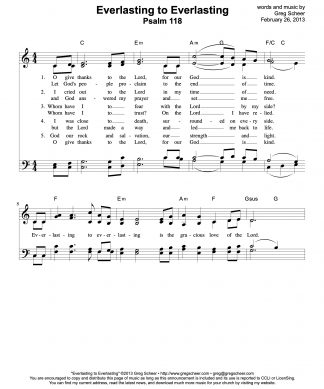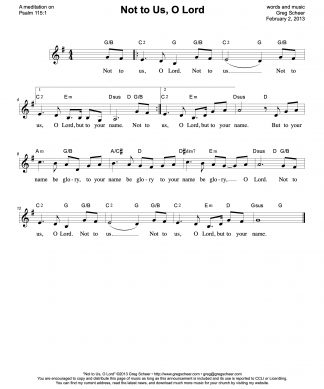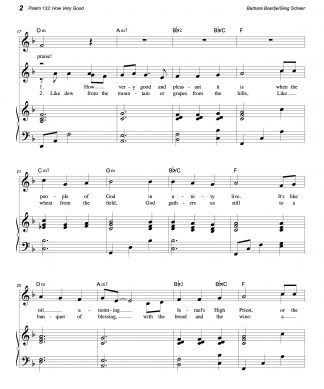
SYNOPSIS: In the conclusion of his Lenten series, Greg shares song suggestions for Easter Day and Eastertide worship services.
EPISODE SECTIONS:
- 0:30 – Introduction: Easter Day vs. Eastertide
- 2:45 – Songs for Easter Day
- 6:34 – Songs for Eastertide
- 16:27 – Songs by Greg
- 24:46 – Spoken word piece: “Real Good”
RESOURCES MENTIONED IN THIS EPISODE:
- Hymns: Jesus Christ Is Risen Today, The Day of Resurrection, Thine Is the Glory, Up from the Grave He Arose, Christ Is Alive, I Know That My Redeemer Lives, Now the Green Blade Rises
- Contemporary Songs: See, What a Morning, Living Hope, Before the Throne of God Above, Morning Has Broken
- Global Songs: Mfurahini, Aleluya/Christ Has Arisen, Alleluia, Zimbabwe Alleluia, Celtic Alleluia, Taizé Alleluia, Holy Gift of Love, Kwake Yesu
- Just Add People Arrangements: The Strife Is O’er, Morning Has Broken, How Can I Keep from Singing?, O the Blood of Jesus
- Songs by Greg: Let His Name Be Lifted Up, Jesus Lives and So Shall I, O Risen Christ, Our Living Hope, You Are the Resurrection
TRANSCRIPT
Hello, friends. This is Greg Scheer with the Greg Scheer Music Podcast. And today we’re going to be talking about Easter and Eastertide. This is the last of our series about Lent and Holy Week and Easter planning, so today we’ll be talking about the Easter side of things.
“More…”So first we have to start off with some definitions. We know what Easter is, and in this particular podcast I’m calling it a specific thing. I’m calling it Easter Day. Some people call it Resurrection Sunday, but this is the end of the three days in the tomb, Jesus rises, and this is the day that we celebrate that event. That is quite a time-bound event. You wake up in the morning, and you go to church, and this is the day that the Lord is risen. That is Easter Day. Eastertide, however, is a season. Sometimes it’s called Easter season. And much like Christmas and Christmastide there is the day, and then there is a season that follows it that continues the celebration. So Eastertide continues the resurrection celebration for seven weeks, and those seven weeks end with Pentecost. Of course, many churches on that final week, instead of celebrating Ascension in a midweek service, they celebrate it on the week before Pentecost, so you’re gonna need to the math for yourself.
So, I want to separate those two concepts, because I think it’s important for us to distinguish between the kinds of things that are just right for Easter Day, and the things that are right for the longer season of Eastertide. So the first thing I’ll say about Easter Day— we’ll start with Easter Day, and we’ll move to Eastertide in a minute. The first thing I’ll say about Easter Day, is, like I encourage you on all of the major holidays, let the people sing. This is not the time to bring out your fussy arrangements of “Christ the Lord Is Risen” in 5/4 played by a jazz band and la, da, da. No. That’s not the time for this. People show up to church, and they are eager to sing. So the best thing that you can do is just stay out of the way and let them sing. It’s actually quite a wonderful day because Christmas and Easter are two days when people really sing with gusto. So I would encourage you to, no matter what your church is like, generally speaking I think you want to lean toward the traditional, because that’s where the most well-known and best-loved repertoire is.
So let’s look at some of those, those kinds of songs. If you’re looking at more traditional hymns, this is not rocket science. You’ve got things like “Jesus Christ Is Risen Today,” “The Day of Resurrection.” You’ll notice that both of those have the word “day” in it. I find those very, very difficult to sing later in Easter because you sing, “Jesus Christ is risen today,” but he’s not actually risen today, he was risen last Sunday, I mean, liturgically speaking. So, “The Day of Resurrection,” “Thine Is the Glory.” If you want to kick it old school, “Up from the Grave He Arose.” Right? It’s not my favorite, but it’s a well-loved hymn, and I try to throw people a bone, that even if it’s not my favorite I try to make sure that everybody is feeling the love on Easter morning.
Another one is “The Strife Is O’er.” That’s not quite A-team material, you know, not as many people know it. I think it should be probably better known, but the song “The Strife Is O’er” is a great one. And if you go on my website you will find a Just Add People piano arrangement for that. So if you don’t have the huge pipe organ that really lends itself to singing those kinds of brilliant Easter songs, if you’re leading from the piano, you might find that that piano arrangement works pretty well for you.
On the contemporary side of things, you can, I think a big choice, frequent choice is the Gettys’ “See What a Morning,” and it’s a beautiful narrative of the resurrection. Another one is Phil Wickham’s “Living Hope,” and that is one that probably could be used throughout Eastertide as well, but it’s very good for Easter morning. Especially if you have blended or contemporary worship that would be a good choice for that, because it tells the story and it also talks about the personalization of it, of “I have a living hope because of Jesus’ resurrection.”
On the global side of things, my go-to move for the global songs for Easter would be “Christ Has Arisen, Alleluia.” It’s from Tanzania. I’m going to butcher the word, but it’s “Mfurahini, Haleluya.” Clearly I haven’t sung it many times in Tanzanian or whatever language it is. Forgive my ignorance on that. But “Christ Has Arisen, Alleluia.” I think it’s just a great song. It’s a global song that sings really well no matter what your congregation is. Even if they don’t frequently do global music, this one, I think it first appeared in a Lutheran hymnal. And, you know, the Lutherans, they’re singing people, and they can choose a good song that will fit in their generally more traditional congregations. So that one’s one that can work in a traditional setting, or you can add drums to it. It’s just beautiful. Another one is the Zimbabwe “Alleluia”— [Greg sings] “Alleluia, alleluia. Alleluia, alleluia.” Super super easy. I have led that for years. That’s the melody that I just sang, and then there are three other parts that are very easy to teach to a congregation, especially if they’re good singers. Bring some drums in, possibly put it in medley with another song. That’s gold right there.
Now, let’s look at Eastertide. By the way, I would love feedback. If you have some songs, especially I’m thinking about contemporary Easter Day songs. I just had two examples; it’s not a real strong part of my repertoire. So I would love to hear some of your examples for some of those contemporary songs that fit really well on Easter.
But that’s Easter Day. Let’s move to Eastertide. So these are those seven weeks before Pentecost. The basic problem of Eastertide in terms of music planning is that you have so many songs that tell the story of Jesus’ resurrection in the moment, right? “Jesus Christ Is Risen Today,” or “See What a Morning” tells the dramatic story of Jesus rising. It feels, to me, less and less appropriate the further you move away from Easter, from Easter Day. And so what we really want to find for Eastertide is songs that really unpack the meaning of the resurrection. So instead of telling the story and saying, “Yay! Jesus is risen,” Eastertide in my mind answers the question, “Jesus is risen— now what?” Okay, so there’s a lot of songs that do deal with that, but not probably quite as thick of a repertoire as we have for Easter Day.
So one that I like on the traditional side of things is “Christ Is Alive.” That’s Brian Wren’s song— “Christ is alive, let Christians sing.” And what I like about this song is that it looks open-eyed at the problems of the world and says, basically, “Christ is alive, and therefore things are going to start changing. Therefore we can have hope that the injustices we see in the world will be healed.” Et cetera. So it really talks about what does the resurrection mean for us moving forward. Another one is “I Know that My Redeemer Lives,” and once again, this is, “I know that my Redeemer lives, and therefore I know that I have a surety in my salvation.” That’s the kind of message of that song.
Other choices, basically any “alleluia” is appropriate for Eastertide, and for Easter. You know that some, we talked about this earlier. Some churches, they hide the alleluia during Lent. They literally do not sing the word “alleluia” or say the word “alleluia” all of Lent. So then their Sunday morning worship is even more joyous because they finally get to say the word “alleluia.” Now, I’ve never worked in a church that does that, but you get the idea. It’s a little odd to be singing lots of jubilant “alleluias” during Lent. So now this is the time to really just let those “alleliuas” fly. “Alleluia” is a word of joy, okay, and so we can really go through Eastertide with that. Some that you might know, the Celtic “Alleluia,” that’s a good one. Taizé, the Taizé community in France has one. It’s actually in a minor key which is a little bit odd for an “alleluia.” That’s a nice one. But any “alleluia” is appropriate during Eastertide.
Also appropriate during Eastertide would be kind of generally themed songs about new life, about spring, and about renewal. All of those are themes that go with the resurrection. Because Jesus died and rose again, healing starts to come to the earth. Salvation is worked. Not only do we have new life in the sense of being born again in Christ, but it’s also the whole world is being redeemed.
So, some songs that I think are good for that. One that I really like is “Now the Green Blade Rises.” You’ll recognize the tune of “Sing We Now of Christmas.” That tune, and it’s a beautiful imagery of the green blade, the blade, the leaf of the plant is breaking through the cold ground, and it’s starting to emerge. It’s a spring image and it also is an image of Christ emerging from the tomb, and then all the new life that that brings. It’s a beautiful option. Another one would be “Morning Has Broken.” Now this, “Morning Has Broken” is a song that can be sung throughout the year, especially as an opening song in a morning service. But “Morning Has Broken” is really talking about, one of the lines is “God’s re-creation of” I can’t remember the next line, but any case. It’s talking about that re-creation that Christ’s resurrection works.
“How Can I Keep from Singing?” That’s a great one. It talks about the troubles of life, but “If Christ is Lord of all the earth how can I keep from singing?” Both “Morning Has Broken” and “How Can I Keep from Singing?” I’ve got Just Add People arrangements of those, really nice piano arrangements that you can do with your church. So I’d love it if you would download those and use them in your churches, ’cause that’s why I wrote them. If you have pianists who don’t do great improvising their own arrangements, this is a way to give them some music that will make them sound like a million bucks, even though they’re not comfortable with making up those things themselves.
What do we have next for Eastertide? Some contemporary songs that would be good for Eastertide: “Before the Throne of God Above.” That is a song about our salvation resting entirely in Christ, and it talks about this, maybe a little bit moving more towards Ascension, but this idea that Jesus resides in heaven advocating on our behalf. But this, the basic idea is, for Eastertide an important theme is Jesus as high priest. He is the one that does that work for us. He is both the one that offers the sacrifice and the sacrifice. So any songs that talk about that. “Before the Throne of God,” another one would be “There Is a Redeemer.” Both of those are oldies but goodies. They still sing really well, I think.
Some global songs that you might want to look at. One of my favorites is “Holy Gift of Love.” It’s from Mongolia, and it first appeared in a collection I edited called Global Songs for Worship. It’s a Mongolian song, but it has some pop influences to it. And I actually sing this song quite a bit during Lent, too, because it says, “The proof of Jesus’ love is printed in his palms,” and it talks about the sacrifice of Jesus. But it’s a very soaring kind of song, so during Lent it feels very emotional, and the pathos of the crucifixion, but then during Easter it reminds us of the sacrifice that has been made on our behalf. So I love that one, “Holy Gift of Love” from Mongolia. There’s a Latin song called “Oh How Good Is Christ the Lord.” It’s a good one; it’s not my go-to. [Greg sings.] It’s got that rhythm to it, and it’s short, so I often, because it’s just kind of a little bon-bon of a song, a corito, I often will put that together with another song, just to give it a little bit more play in the service. I’ll often put it in medley with another song that’s in the key of D.
Blood songs are appropriate during Easter. And of course they’re always appropriate at Communion. But I’m thinking, for example, of the African-American “O the Blood of Jesus,” and I have an arrangement of this one. It’s a Just Add People arrangement that has kind of a Gospel feel to it. I know when I look in a hymnal and I see the music for “O the Blood of Jesus,” it just, if you play it exactly as it is on the page, it just sounds wooden. So this arrangement, then, can bring a little more life to it. So “O the Blood of Jesus” is a great one, just celebrating the sacrifice that’s been made for us throughout the whole of Eastertide.
And then finally I’ll recommend one of my favorite songs, really, favorite congregational songs of all time, “Kwake Yesu.” It’s “Here on Jesus Christ I will stand,” and it’s actually, it’s a Kenyan reworking of “On Christ the Solid Rock,” and it’s really kind of an interesting story how it. . . Missionaries brought it to Kenya, and then the Kenyans put new music to it, and then it came back to us as really an entirely new thing. “Kwake Yesu” is a beautiful song, and it’s just talking about building our faith on Jesus Christ, the centrality of Jesus Christ. You can find that in a number of hymnals, and you can also find my arrangement of that at GIA, giamusic.com, look up my name and “Kwake Yesu,” and I have a nice choral arrangement of that.
Some other songs. . . I’ve written a number of songs that I think really work quite well during Eastertide. One is an oldie but goodie. It’s one of the earliest congregational songs that I wrote, and it’s called “Let His Name Be Lifted Up.” And just for fun I’m going to play that for you. You’re going to hear a 27-year old Greg singing this song. Let’s take a listen.
1. Let his name be lifted up,
just as he was lifted up.
The power of the cross
has conquered our loss.
Let his name be lifted up.
Let his name be lifted up.
Let his name be lifted up.
Let his name be lifted,
let his name be lifted up.
2. He has paid our debt for us.
He has paid our debt for us.
He was buried within
by the weight of our sin.
He has paid our debt for us.
3. He has risen from the grave.
He has risen from the grave.
He has triumphed over death
so that we too would live.
He has risen from the grave.
4. He will come again for us.
He will come again for us.
The trumpet will sound;
he’ll descend from the clouds.
He will come again for us.
So that is “Let His Name Be Lifted Up.” On my website you can find that one with a really nice piano arrangement that has the modulation that you heard in the recording. The flute part that you heard in the recording is also available, and four parts for choir, or for congregation if you want to, are also available.
“Jesus Lives and So Shall I”— this is like, I think, the quintessential Eastertide song. “Jesus Lives and So Shall I,” so it’s basically saying that the result of the resurrection is that I have new life as well. So, there’s a traditional hymn called “Jesus Lives and So Shall I,” and my song that I wrote based on this started as, kind of as a riff on that song, but then it just kind of moved to different areas. But it’s really talking about that whole thing. The work is entirely done in Christ. We rely entirely on the work of Christ. It is in kind of a praise and worship style. You could imagine Chris Tomlin doing it. Of course if Chris Tomlin did it, we would have to modulate it up by about a fourth or a fifth.
1. Jesus lives, and so shall I.
The sting of death is gone forever.
Jesus lives— the One who died
the bands of death to sever.
God has raised me from the dust:
Jesus is my hope and trust.
2. Jesus lives! My soul revived
when Jesus called. I was awakened
from my sleep to glorious light;
the shroud of death He’s shaken.
From the grave God raised me up:
Jesus is my hope and trust.
Another one that I wrote is called “O Risen Christ, Our Living Hope.” This is kind of a Getty-style song. I mean, the Gettys are kind of known for a particular style, and this is in that style, so mostly diatonic and multiple verses, et cetera. You know the Getty style. I don’t have to tell you about that.
And if you want to go really far afield, here’s one for you: “You Are the Resurrection.” This is a song I wrote for an international project called Red Crearte. I might have gotten that wrong, but in any case we were all asked to write a song based on a text, or kind of a starter text. So I wrote a song called “You Are the Resurrection.” And the fun thing is that it’s in a bossa nova style. It’s very very groovy. And if you go to the website you will be able to download the music. But not only that, but you will be able to see me and my children dancing to the song. Who wouldn’t want that? Right? So go on over to the website and see “You Are the Resurrection.”
So those are lots of options for Easter Day and Eastertide. Hopefully you have a little bit of a sense of the difference between those two and the kinds of themes that you can be teasing out throughout Eastertide.
I’m going to leave you with a song, kind of an avant-garde. This is not a congregational song, but I just, as I was preparing this podcast I came across it, and I said, “I’m gonna share this.” So it is kind of a spoken word piece. Amy Phillips did the spoken word part. It’s based on her grandfather’s struggle with Alzheimer’s, and Scripture from 1 Corinthians 15, that’s talking about the resurrected body and what would that look like. And I did the kind of, I call it “soundscape.” It’s not exactly a composition but it’s more of a soundscape. So I’m going to end with that piece. Rather than the traditional outro music I’m going to leave you with that.
Thank you so much for being here for this podcast. I look forward to meeting you again on future podcasts. And, as I said, we will end with “Real Good.”




